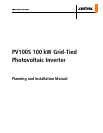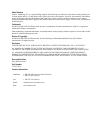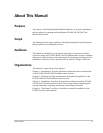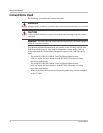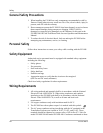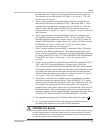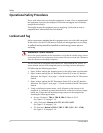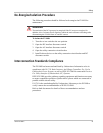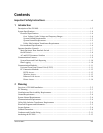
Safety
viii 152315 Rev C
General Safety Precautions
1. When installing the PV100S use only components recommended or sold by
Xantrex. Doing otherwise may result in a risk of fire, electric shock, injury to
persons, and will void the warranty.
2. Do not attempt to operate the PV100S if it has been dropped, or received more
than cosmetic damage during transport or shipping. If the PV100S is
damaged, or suspected to be damaged, see the Warranty for this unit in the
PV100S 100 kW Grid-Tied Photovoltaic Inverter Operation and Maintenance
Manual.
3. To reduce the risk of electrical shock, lock-out and tag the PV100S before
attempting any maintenance, service, or cleaning.
Personal Safety
Follow these instructions to ensure your safety while working with the PV100S.
Safety Equipment
Authorized service personnel must be equipped with standard safety equipment
including the following:
• Safety glasses
• Ear protection
• Steel-toed safety boots
• Safety hard hats
• Padlocks and tags
• Appropriate meter to verify that the circuits are de-energized
(600 Vac and DC rated, minimum)
Check local safety regulations for other requirements.
Wiring Requirements
1. All wiring methods and materials shall be in accordance with the National
Electrical Code ANSI/NFPA 70. When sizing conductors and conduits
interfacing to the PV100S, both shall be in accordance with the National
Electric Code ANSI/NFPA 70, as well as all state and local code
requirements.
2. Use copper conductors only with insulation rated for 90 °C.
3. The PV100S has a three-phase output. It is marked with this symbol:
4. The AC power conductor wiring interfacing with the AC terminals in the
Transformer Enclosure are located at T6-X1, T6-X2, and T6-X3. These
terminals should be tightened to a torque value of 420 in-lbs (47.5 Nm) for
model PV100S-208 and model PV100S-480. Conductors terminated to these




